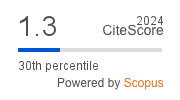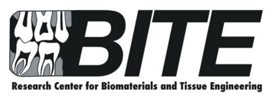Oral hygiene assessment of dental students using the Oral Rating Index (ORI)
Downloads
Background: Oral hygiene screening should be done on a regular basis, notably during the COVID-19 outbreak, during which lifestyle changes and government lockdown policies lower the oral hygiene level. The Oral Rating Index (ORI), established by Kawamura, is the suitable oral hygiene screening index during the COVID-19 pandemic. Dental students are supposed to be role models for the community by maintaining good dental hygiene. Purpose: To study the use of online oral hygiene screening using the ORI and to determine the oral hygiene of dentistry students at Trisakti University. Methods: This research is a cross-sectional descriptive observational study. A total of 100 preclinical dental students from Trisakti University took part in the study. Intraoral photos were taken and sent to the researcher via the internet. The ORI was used to evaluate the data. The reliability of the results was determined using a per cent agreement test and Cohen's kappa coefficient. Results: The average oral hygiene score of dental students at Trisakti University was 0.58±0.88. The per cent agreement was 88%, and Cohen's kappa coefficient was κ = 0.79, indicating excellent reliability. Conclusion: Based on their ORI score, it can be stated that dentistry students at Trisakti University have good oral hygiene and that online evaluation using the ORI is a useful tool for routine oral hygiene screening.
Downloads
Baiju RM, Peter E, Varghese NO, Sivaram R. Oral health and quality of life: current concepts. J Clin Diagn Res. 2017; 11(6): ZE21–6. doi: https://doi.org/10.7860/JCDR/2017/25866.10110
Badan Penelitian dan Pengembangan Kesehatan. Riset kesehatan dasar (RISKESDAS). Jakarta: Kementerian Kesehatan Republik Indonesia; 2018. web: https://www.litbang.kemkes.go.id/laporan-riset-kesehatan-dasar-riskesdas/
Soesanto S, Octarina, Kusnoto J. Peningkatan kesadaran warga RT 014/RW 008 JatiPulo, Jakarta Barat mengenai kesehatan gigi pada masa pandemi Covid-19. Akal Abdimas dan Kearifan Lokal. 2021; 2(1): 22–9. web: https://trijurnal.trisakti.ac.id/index.php/kearifan/article/view/9032
Mekhemar M, Ebeid K, Attia S, Dörfer C, Conrad J. Oral health attitudes among preclinical and clinical dental students: A pilot study and self-assessment in an Egyptian State-Funded University. Int J Environ Res Public Health. 2020; 18(1): 1–13. doi: https://doi.org/10.3390/ijerph18010234
Rahman B, Al Kawas S. The relationship between dental health behavior, oral hygiene and gingival status of dental students in the United Arab Emirates. Eur J Dent. 2013; 7(1): 22–7. doi: https://doi.org/10.1055/s-0039-1698991
Saptari VS. Perilaku kesehatan gigi dan mulut mahasiswa Fakultas Kedokteran Gigi Universitas Trisakti: kajian dengan menggunakan Hiroshima University Dental Behavioral Inventory. Thesis: Jakarta, Universitas Trisakti; 2021. p. 1–35. web: http://repository.trisakti.ac.id/usaktiana/index.php/home/detail/detail_koleksi/7/SKR/judul/00000000000000106874/
Kawamura M, Ikeda-Nakaoka Y, Sasahara H. An assessment of oral self-care level among Japanese dental hygiene students and general nursing students using the Hiroshima University--Dental Behavioural Inventory (HU-DBI): surveys in 1990/1999. Eur J Dent Educ. 2000; 4(2): 82–8. doi: https://doi.org/10.1034/j.1600-0579.2000.040206.x
Al-Shiekh L, Muhammed ME-D, Muhammed AE-R, El-Huda MA, Hashim NT. Evaluation of dental students' oral hygiene attitude and behavior using HU-DBI in Sudan. Sci Postprint. 2015; 1(2): 2–6. doi: https://doi.org/10.14340/spp.2015.01A0001
Marya C. A practical manual of public health dentistry. New Delhi: Jaypee Brothers Medical Publishers; 2012. p. 146–148, 156–160, 231. doi: https://doi.org/10.5005/jp/books/11589
Sinjari B, Rexhepi I, Santilli M, D Addazio G, Chiacchiaretta P, Di Carlo P, Caputi S. The impact of COVID-19 related lockdown on dental practice in Central Italy-outcomes of a survey. Int J Environ Res Public Health. 2020; 17(16): 1–14. doi: https://doi.org/10.3390/ijerph17165780
Pinzan-Vercelino C-R-M, Freitas K-M-S, Girí£o V-M-P, da Silva DO, Peloso R-M, Pinzan A. Does the use of face masks during the COVID-19 pandemic impact on oral hygiene habits, oral conditions, reasons to seek dental care and esthetic concerns? J Clin Exp Dent. 2021; 13(4): e369–75. doi: https://doi.org/10.4317/jced.57798
Peloso RM, Pini NIP, Neto DS, Mori AA, de Oliveira RCG, Valarelli FP, Freitas KMS. How does the quarantine resulting from COVID-19 impact dental appointments and patient anxiety levels? Braz Oral Res. 2020; 34: 1–11. doi: https://doi.org/10.1590/1807-3107BOR-2020.VOL34.0084
Estai M, Kanagasingam Y, Huang B, Checker H, Steele L, Kruger E, Tennant M. The efficacy of remote screening for dental caries by mid-level dental providers using a mobile teledentistry model. Community Dent Oral Epidemiol. 2016; 44(5): 435–41. doi: https://doi.org/10.1111/cdoe.12232
Kawamura M, Fukuda S, Inoue C, Sasahara H, Iwamoto Y. The validity and reproducibility of an oral rating index as a measurement of gingival health care and oral hygiene level in adults. J Clin Periodontol. 2000; 27(6): 411–6. doi: https://doi.org/10.1034/j.1600-051x.2000.027006411.x
Camgoz M, Gurgan CA, Akkaya M. Turkish dental students' and dentists' ability to assess gingival health status with DAAGS software. J Dent Educ. 2011; 75(8): 1127–32. doi: https://doi.org/10.1002/j.0022-0337.2011.75.8.tb05158.x
Arifin WN. Introduction to sample size calculation. Educ Med J. 2013; 5(2): 89–96. pdf: https://eduimed.usm.my/EIMJ20130502/EIMJ20130502_12.pdf
Kim KJ, Komabayashi T, Moon SE, Goo KM, Okada M, Kawamura M. Oral health attitudes/behavior and gingival self-care level of Korean dental hygiene students. J Oral Sci. 2001; 43(1): 49–53. doi: https://doi.org/10.2334/josnusd.43.49
Lalani A, Dasar PL, Sandesh N, Mishra P, Kumar S, Balsaraf S. Assessment of relationship between oral health behavior, oral hygiene and gingival status of dental students. Indian J Dent Res. 2015; 26(6): 592–7. doi: https://doi.org/10.4103/0970-9290.176922
Bobu LI, Saveanu CI, Ciceu O, Balcos C, Armencia A, Murariu A. Association between oral health perceptions and oral health status of dental students in Iasi, Romania. Rom J Med Dent Educ. 2020; 9(5): 84–90. web: https://journal.adre.ro/association-between-oral-health-perceptions-and-oral-health-status-of-dental-students-in-iasi-romania/
Perry DA, Beemsterboer PL, Essex G. Periodontology for the dental hygienist. 4th ed. Missouri: Elsevier; 2014. p. 54. web: https://www.elsevier.com/books/periodontology-for-the-dental-hygienist/978-1-4557-0369-2
Astini NWRS, Susanti DNA, Handoko SA. Hubungan antara pengetahuan dan perilaku menjaga kesehatan gigi dengan oral hygiene pada mahasiswa Program Studi Pendidikan Dokter Gigi Fakultas Kedokteran Universitas Udayana. Bali Dent J. 2019; 3(2): 70–3. doi: https://doi.org/10.51559/bdj.v3i2.167
Mamai-Homata E, Koletsi-Kounari H, Margaritis V. Gender differences in oral health status and behavior of Greek dental students: A meta-analysis of 1981, 2000, and 2010 data. J Int Soc Prev Community Dent. 2016; 6(1): 60–8. doi: https://doi.org/10.4103/2231-0762.175411
Gwet KL. Handbook of inter-rater reliability. 4th ed. Gaithersburg: Advanced Analytics, LLC; 2014. p. 16,74-75,100. web: https://books.google.co.id/books/about/Handbook_of_Inter_Rater_Reliability_4th.html?id=fac9BQAAQBAJ&redir_esc=y
McHugh ML. Interrater reliability: the kappa statistic. Biochem medica. 2012; 22(3): 276–82. pubmed: https://pubmed.ncbi.nlm.nih.gov/23092060/
Ahmad I. Essentials of dental photography. Wiley; 2019. p. 5, 18. doi: https://doi.org/10.1002/9781119312161
Copyright (c) 2022 Dental Journal (Majalah Kedokteran Gigi)

This work is licensed under a Creative Commons Attribution-ShareAlike 4.0 International License.
- Every manuscript submitted to must observe the policy and terms set by the Dental Journal (Majalah Kedokteran Gigi).
- Publication rights to manuscript content published by the Dental Journal (Majalah Kedokteran Gigi) is owned by the journal with the consent and approval of the author(s) concerned.
- Full texts of electronically published manuscripts can be accessed free of charge and used according to the license shown below.
- The Dental Journal (Majalah Kedokteran Gigi) is licensed under a Creative Commons Attribution-ShareAlike 4.0 International License

















